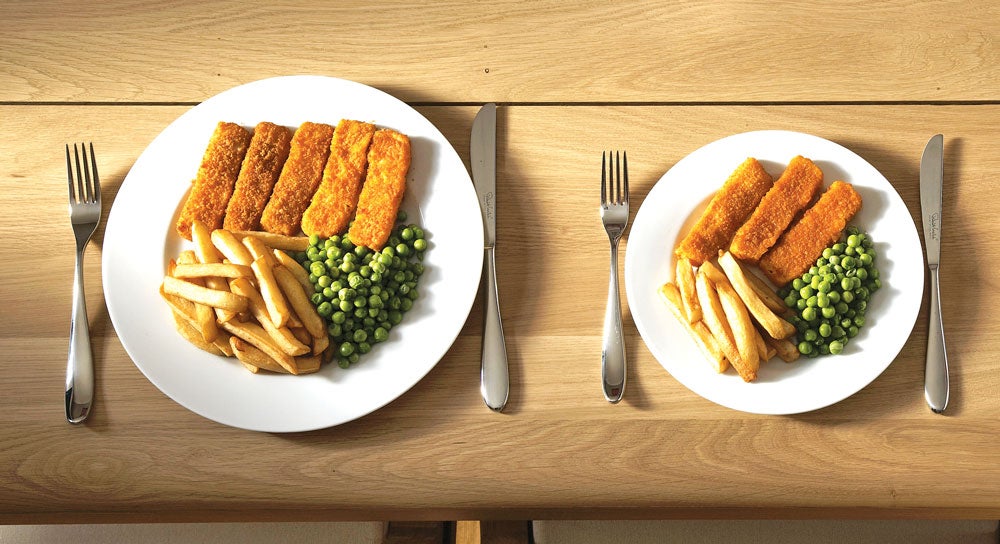Behavioral Insights for Health Innovation Spotlight Series: Tackling the Rising Obesity Rate

First Lady Michelle Obama put it this way: “The physical and emotional health of an entire generation and the economic health and security of our nation is at stake.”
Her statement speaks to one of the most significant health challenges our nation is facing—more than a third of American children and teens are overweight or obese. For adults, the rate jumps to over two-thirds.
From the recent taxes on sugar-sweetened drinks to changes in FDA food labeling, there’s been no shortage of public initiatives to boost healthy eating. Although we’ve certainly seen signs of declining obesity rates among our youngest children, this progress is not being attained evenly and huge disparities continue to persist.
If progress is to be made across all populations, communities, and ages, then new solutions are needed. The behavioral sciences provide us with innovative approaches to address the obesity epidemic. Researchers who study human behavior have uncovered simple yet powerful findings about what influences our decisions and actions around food and diet. While structural fixes like greater accessibility to and lower costs of food are crucial, the following three insights provide a small sampling of how behavioral science can also be successfully leveraged as part of a comprehensive approach to improving eating habits for all Americans.
Insight #1: Big bowl, big problem. It turns out that our eyes really are bigger than our stomachs, and unfortunately we tend to defer to them when deciding how much to eat. In one behavioral study, researchers found that people served themselves 31% more ice cream when they were given a larger bowl and 14.5% more when they used a larger spoon. Simply reducing the size of plates and bowls can help us keep our portions in check without exerting as much self-control as putting less food on a big plate (or a big spoon).
Insight #2: Healthy options on hand. Tableware isn’t the only hidden influence on our eating habits —where food is placed and how it is marked also has a substantial impact on consumer choices. In one field study, researchers placed colored labels on foods in a hospital cafeteria, marking them as green (healthy), yellow (somewhat healthy), or red (unhealthy) based on their nutrition content. They also placed the healthy options at eye-level in refrigerators and included them at less-healthy counters to make them more prominent and accessible. As a result, healthy food sales increased from 41% to 46% after two years, and healthy drink sales rose from 52% to 60%. Using clear, intuitive labels and making nutritious food more visible can guide people to make better food choices, even while offering them all the same options as before.
Insight #3: A token effort. What if healthy eating was rewarding now? It’s no easy feat to choose fruits and vegetables when the health benefits feel far off in the future and the costs (giving up something tasty) are in the present, but that doesn’t mean we can’t create small rewards to turn the tables. Researchers offered redeemable tokens to elementary school students every time they ate a serving of fruits or vegetables at school for a period of either three or five weeks. The tokens nearly doubled the fraction of students eating fruits or vegetables, jumping from a baseline of 39% to 76.4% in the three-week program and 79.5% in the five-week program. The students even kept up their healthy habits two months after the tokens program ended, eating 21% more fruits or vegetables compared to the baseline in the three-week program and 44% more in the five-week program. Making nutrition feel more rewarding now can foster better eating habits that last.
If applied at a large scale, these simple insights have great potential for reducing obesity. Some employers like Google have gotten a head start on implementing behaviorally-informed tweaks in their offices. Merely placing water bottles at eye-level in their cafeterias increased water consumption among their employees by 47%, and posting signs about the influence of plate size led to a 50% increase in the use of small plates.
Given these meaningful research findings, now is the time for health practitioners and policymakers to use these evidence-based behavioral tools to address obesity and other pressing challenges.
The Behavioral Insights for Health Innovation (BIHI) initiative, a collaboration between ideas42 and the Center for Health Incentives and Behavioral Economics (CHIBE) at the University of Pennsylvania, aims to facilitate the wide use of behavioral science in healthcare. Supported by the Robert Wood Johnson Foundation, we’re producing this spotlight series to highlight relevant discoveries from real-world health contexts. Make sure to check out our last piece on improving vaccination rates and look out for more posts in the coming months!